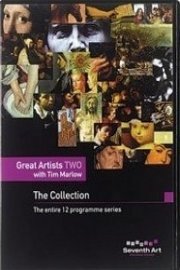In episode 9 of season 1 of Great Artists Two with Tim Marlow, titled Whistler, viewers are invited to explore the intriguing life and groundbreaking works of James Abbott McNeill Whistler, a pivotal figure in the world of art during the late 19th century. This episode dives into the complexities of Whistler's character, his innovative techniques, and the profound impact his art had on both his contemporaries and future generations.
Tim Marlow serves as an engaging and knowledgeable host, guiding the audience through the vibrant tapestry of Whistler's artistic journey. With a deft combination of art history insights and personal anecdotes, Marlow captures the quintessence of Whistler's artistry, revealing how the artist's unique vision shaped the aesthetic movements of his time. The episode immerses viewers in the atmosphere of Whistler's London milieu, portraying the social and artistic circles he navigated, his friendships, rivalries, and the cultural context that fueled his creative output.
One of the episode's highlights is its examination of Whistler's most famous painting, Arrangement in Grey and Black No. 1, commonly known as Whistler's Mother. Marlow delves into the nuances of this iconic portrait, exploring the themes of composition, color, and form that define Whistler's innovative style. He discusses the artist’s departure from the traditional narratives of portraiture and his emphasis on aesthetic beauty over mere representation, which was revolutionary for its time. This exploration not only sheds light on the painting's significance but also invites viewers to appreciate the emotional depth and subtle complexities within the work.
Throughout the episode, Marlow enriches his commentary with stunning visuals, including high-quality reproductions of Whistler's paintings and breathtaking shots of the locations that inspired him. Viewers will get a glimpse into the artist's world, from the bustling streets of Victorian London to the serene landscapes of Brittany, France, where Whistler produced some of his most captivating works. This visual journey underscores how the environment influenced Whistler's palette and composition, providing a deeper understanding of his artistic choices.
In addition to discussing individual works, the episode also touches on Whistler's philosophy of art, encapsulated in his famous mantra, "Art is the science of the beautiful." Marlow highlights how this ideology propelled Whistler to experiment with color and form, leading to the development of his signature style that bridged realism and abstraction. This exploration of Whistler's philosophy encourages viewers to think critically about the role of beauty in art and its capacity to provoke thought and emotion.
No discussion of Whistler would be complete without addressing his tumultuous relationships with his contemporaries, particularly the well-known conflict with the British painter John Everett Millais and the infamous libel case against critic John Ruskin. Marlow navigates these disputes with sensitivity, illustrating how they not only influenced Whistler's career but also marked significant turning points in the art world. This rich narrative enables viewers to appreciate the societal tensions that shaped the artistic landscape of the time, offering a more comprehensive understanding of Whistler's place within it.
As the episode unfolds, viewers are introduced to some of Whistler's lesser-known works that exhibit his range as an artist. Marlow highlights pieces from different phases of Whistler's career, revealing his evolution as an artist and how experimentation played a critical role in his artistic development. Each painting serves as a testament to Whistler's unyielding pursuit of beauty and form, while also reflecting the broader artistic movements occurring during his lifetime.
In a segment dedicated to Whistler's international recognition, Marlow discusses the artist's role in the Impressionist movement and his contributions to exhibitions both in Europe and the United States. Whistler’s commitment to exhibiting his work and promoting his artistic vision helped elevate the status of American artists abroad, positioning him as a cultural ambassador of sorts.
Overall, this episode of Great Artists Two not only honors Whistler's legacy but also encourages viewers to engage with his art on a personal level. Through Tim Marlow's enthusiastic narration, audiences are invited to contemplate their interpretations of beauty and artistic expression. By the end of the episode, viewers are left with a profound appreciation for Whistler's genius and his enduring influence on the art world, making it a must-watch for those who seek to understand the intricacies and depths of artistic innovation. Whistler’s life and work resonate far beyond his time, inviting a modern audience to connect with his vision and the beauty he so ardently pursued.
-
Genres
-
Channel
-
LanguageEnglish

-
 MyFreeDIRECTV is a new free premium TV experience.
MyFreeDIRECTV is a new free premium TV experience.
-
 Enjoy a curated selection of popular free live channels and On Demand library.
Enjoy a curated selection of popular free live channels and On Demand library.
-
 Try the DIRECTV experience - All you need is the DIRECTV app.
Try the DIRECTV experience - All you need is the DIRECTV app.

 MyFreeDIRECTV is a new free premium TV experience.
MyFreeDIRECTV is a new free premium TV experience.
 Enjoy a curated selection of popular free live channels and On Demand library.
Enjoy a curated selection of popular free live channels and On Demand library.
 Try the DIRECTV experience - All you need is the DIRECTV app.
Try the DIRECTV experience - All you need is the DIRECTV app.